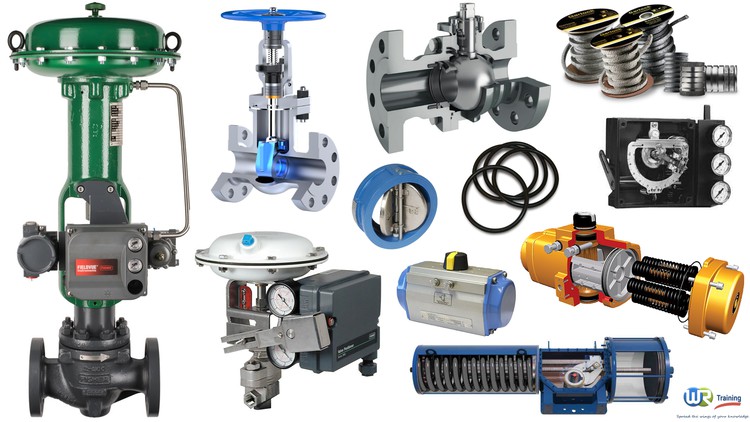1. Types of valves Learning objectives
2. Gate valves
3. Gate valves 3D dismantling
4. Gate valves 2D dismantling
5. Gate valves Disk design
6. Gate valves Stem design
7. Gate valves Seat design
8. Globe valves
9. Globe valves 3D dismantling
10. Globe valves 2D dismantling
11. Globe valves Z-body design
12. Globe valves Y-body design
13. Globe valves Angle design
14. Globe valves Disk design
15. Globe valves Disk - Stem connections
16. Globe valves Seat design
17. Globe valves Direction of flow
18. Ball valves
19. Ball valves Components
20. Ball valves 3D dismantling
21. Ball valves 2D dismantling
22. Ball valves Actuators
23. Ball valves Pros & Cons
24. Ball Valves Port pattern
25. Ball valves Valve materials
26. Ball valves Stem design
27. Ball valves Valve position
28. Plug valves
29. Plug valves Valve components
30. Plug valves 3D dismantling
31. Plug valves 2D dismantling
32. Plug valves Numerous designs
33. Plug valves Plug designs
34. Plug valves Multiport plug designs
35. Plug valves Lubricated design
36. Plug valves Non-Lubricated design
37. Plug valves Gland design
38. Diaphragm valves
39. Diaphragm valves 3D dismantling
40. Diaphragm valves 2D dismantling
41. Diaphragm valves Straight through & weir types
42. Diaphragm valves Diaphragm construction
43. Diaphragm valves Bonnet design
44. Pinch valves
45. Pinch valves Body design
46. Butterfly valves
47. Butterfly valves 3D dismantling
48. Butterfly valves Seat design
49. Butterfly valves Disk & Stem assembly
50. Needle valves
51. Needle valves 3D dismantling
52. Needle valves Valve applications
53. Needle valves Body design
54. Needle valves Stem packing
55. Check valves
56. Check valves Swing
57. Swing check valves 3D dismantling
58. Swing check valves 2D dismantling
59. Assembling a swing check valve - 3D model
60. Tilting disk check valves
61. Lift check valves
62. Lift check valves 3D dismantling
63. Lift check valves 2D dismantling
64. Piston check valves
65. Butterfly check valves
66. Stop check valves
67. Before you proceed to the next section
68. Test your knowledge.html

